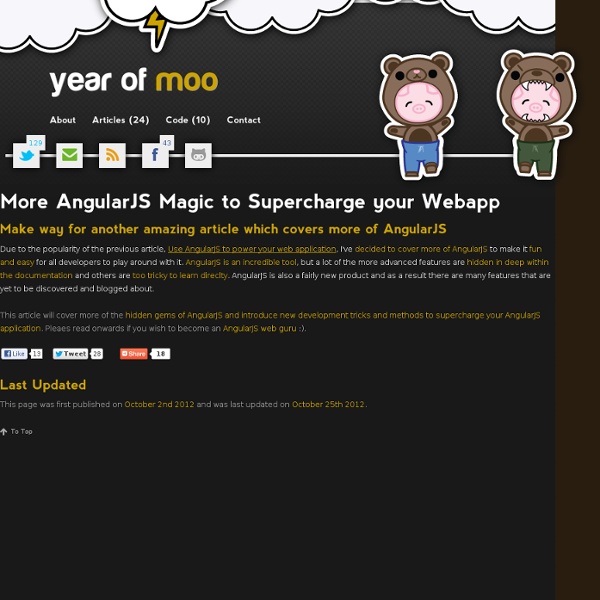More AngularJS Magic to Supercharge your Webapp

AngularUI for AngularJS
AngularJs Tips and Tricks [UPDATED] ☢ DeanSofer.com
These tips were developed in AngularJs v0.10.5 v1.0.1. I'll keep updating this post, so check back often! I've compared a LOT of different javascript frameworks for my company's rewrite, and finally settled on AngularJS because of how rapidly I'm able to produce prototypes. In my opinion, although it's very alpha and fairly lacking on the graphical side, it's excellent for CRUD applications (meaning forms, tables and reports). I'm still trying to lean towards emphasizing reusable widgets and directives instead of just custom-coding everything for your own app. Most of these tips have been moved to AngularUI - Go check it out! The companion suite to AngularJS, a collection of work by many AngularJS users with a plethora of useful utilities. Table of Contents Serializing the Form No. If every form control on your page does not have an ng-model then you're doing it wrong. Seriously. Useful $scope Methods Don't Escape HTML One of the first things people get stuck on. ngCloak ngBind Routing Tricks
Free online services
Espacenet - patent search Over 70 million patent documents from all over the world, giving information about inventions and technical developments from 1836 to today. European publication server The official platform and source for EPO publications: European patent applications, patent specifications and corrected documents. Patent translate This machine translation service, available in Espacenet and the European publication server, is specially designed for complex patent texts. European Patent Bulletin Published weekly, the bulletin contains the bibliographic and legal-status data stipulated in the EPC for European patent applications and patents. IPscore Software to help you to evaluate, analyse and manage your patent portfolio. Common Citation Document The CCD provides single-point access to citation data for patent applications examined by the trilateral offices.
Related:
Related:



